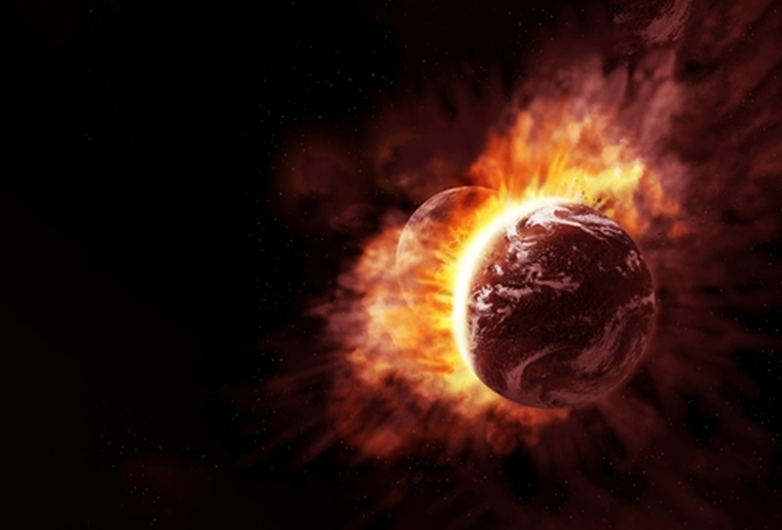The remains of a cosmic collision with another planet are believed to be buried in the Earth's mantle

4.5 million years ago, our planet would have experienced a colossal collision with a celestial body called Theia, leaving remains that were buried in the Earth's mantle.
In the 1980s, scientists discovered two strange masses buried deep within the Earth, approximately 2,900 kilometers below the surface, close to the Earth's core. One under the African continent and the other under the Pacific Ocean, these agglomerations are nicknamed “blobs”. Since then, their origin has remained a mystery, until today.

According to a new study published in Nature, these formations are the remains of a collision with a young planet, Theia. This same collision would have given birth to our Moon. This theory was already a hunch among scientists, "but this paper is the first in my opinion to really take this notion seriously," said Robin Canup, a planetary scientist at the Southwest Research Institute in Boulder, Colorado.
Theia and planet Earth: tracing the clues of a gargantuan collision
To investigate the origin of these mysterious “blobs,” a team of researchers used computer simulations of the supposed collision between Theia and Earth and the interaction of matter between the two in the Earth’s mantle.
The simulations revealed that first, chunks of material from Theia buried themselves in the lower part of the Earth's mantle and then, as it evolved, larger chunks continued to accumulate there, forming the gigantic blobs. . These latter are also called by scientists “large low-speed provinces”, because during seismic events, waves travel at a lower speed through these blobs than through the rest of the Earth's mantle.
While some scientists believe that this model still needs to be tested and confronted, the authors of the study put forward, for the first time, solid arguments to prove this theory. They also hope that this research can provide more avenues of research to trace the formation of the Moon, as well as explain why the Earth has such heterogeneous matter, which makes it unique.
Source: websites

